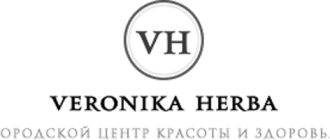Cosmetic procedures during pregnancy and breastfeeding
18.07.2019
Pregnancy and breastfeeding are a time when we care more about the health of our child than about our own beauty. However, you still want to preserve youth and beauty, so many questions arise: which procedures are safe at this time, which should be categorically abandoned, why, and many others. We asked the cosmetologist-dermatologist of “Our Clinic” to clarify the situation!
- When can I start performing professional cosmetic procedures after childbirth?
Immediately after finishing breastfeeding.
- How long does it take for injectable drugs, such as botulinum toxins, to be eliminated from the body?
Botulinum toxins are eliminated within 2 days. Knowing this, some women use a trick - before going to a cosmetologist, they express milk for a given period of time, after which they calmly carry out the procedure. We do not recommend doing this, because... Most procedures have not been studied to ensure their safety for pregnant and breastfeeding women.
- Why can't most procedures be performed during pregnancy and breastfeeding?
To obtain permission to perform procedures on pregnant and lactating women, the drug must be tested on them. Therefore, most drugs do not have confirmed data on the safety of their use for pregnant and lactating women. Painful sensations during injections can provoke uterine tone, and in nursing mothers - cessation of lactation. Some drugs are absorbed into the blood and, once in the milk, are passed on to the baby, or pass through the placenta into the fetal bloodstream. Cosmetologists at Svoe Clinic work only with certified drugs and strictly follow all recommendations, taking into account indications and contraindications for procedures.
- How does professional cosmetics differ from mass market ones? Does it matter what cosmetics to use during pregnancy, lactation and after breastfeeding?
Professional cosmetics undergo more research, are often more concentrated, and contain fewer preservatives and fragrances. Accordingly, such cosmetics are much less likely to cause allergies and irritations. Pregnant and breastfeeding women have more sensitive skin. Due to hormonal imbalance in the body at this time, women are more susceptible to products applied to the skin, the skin is more susceptible to ultraviolet radiation, which means there is a high probability of getting pigmentation. To avoid this, we recommend cosmetics for sensitive skin and creams with SPF protection. You can choose the cosmetics that suit you during a consultation.
- Most pregnant women are now over 30 years old. How to maintain skin health during such a long period of time (pregnancy - breastfeeding)? What procedures should I start with after finishing breastfeeding?
In fact, pregnant and lactating women can and are even recommended to undergo care and support procedures: light chemical, enzyme, enzyme peels, facial massages, masks, facial cleansing.
- Why do stretch marks appear? What can be done to prevent stretch marks? How to get rid of stretch marks?
Indeed, quite often women after pregnancy and birth of a child are bothered by stretch marks. As a rule, this is due to the fact that the woman had a lack of protein in her diet. As we know, if there is insufficient protein, collagen, which gives elasticity to the skin, suffers. The second reason for the appearance of stretch marks may be insufficient nutrition and hydration of the skin.
To prevent stretch marks, the skin should be lubricated with nourishing creams 2 times a day. For the best effect, we recommend alternating creams with oils or body milk. It is necessary to lubricate all those places that are susceptible to stretch marks, and these are: stomach, hips, chest, sides. It is advisable to begin these procedures before the belly begins to grow.
If stretch marks have already appeared, you need to resort to procedures that can be performed at home, these are: massages, massages with a brush or a hard washcloth, followed by the application of rich nourishing creams. Professional cosmetic procedures can be done only after breastfeeding is completed. Laser resurfacing will help fight stretch marks. They are performed only in the autumn-winter period at intervals of once every 1-1.5 months with a mandatory recommendation not to sunbathe in the active sun for at least 2 months. For the best resurfacing effect, it is recommended to alternate with collagen injections, for example the drug “Collost”, or injections of hyaluronic acid, vitamins and silicon. This will stimulate the production of new collagen and stretch marks will become less noticeable. The listed procedures potentiate each other’s action and the effect becomes more pronounced.
If the skin is atonic, flabby, overstretched, and the volume of the abdomen does not go away after childbirth, then it makes sense to seek the help of a plastic surgeon and perform a mini- or full abdominoplasty to significantly improve the appearance of this area.
- Does it matter when to start dealing with stretch marks?
Stretch marks respond best to treatment when they are pinkish-blue in color. These are “fresh” stretch marks. As a rule, they look like this up to a maximum of 2 years. Then they turn white, which means the tissue becomes scar, and it is already difficult to fight it. The sooner you start fighting stretch marks, the better the effect of the procedures will be.
If you have any questions or would like to choose skincare products for your skin, call 8 (812) 407-33-66.
14
3
Drug therapy during breastfeeding
- Levadnaya Anna Viktorovna
- Zhdanova Svetlana Igorevna
Summary
The importance of breastfeeding for the health of mother and child is currently beyond doubt. However, there are many reasons that can prevent full breastfeeding. In particular, drug therapy prescribed during lactation often leads to a temporary cessation of breastfeeding, often unjustified. This may lead to premature termination of breastfeeding. This article highlights the difficulties of prescribing drug therapy during lactation, the contradictions between existing international recommendations and the instructions for the drug, reflects current aspects of the pharmacokinetics of drugs in breast milk and provides practical recommendations on the way to solving the issues listed above.
Key words: lactation, breastfeeding, drug therapy, pharmacodynamics of drugs, pharmacokinetics of drugs, drugs in nursing, antibacterial therapy during lactation, physiology of lactation
For citation: Levadnaya A.V., Zhdanova S.I. Drug therapy during breastfeeding // Neonatology: news, opinions, training. 2022. T. 7. No. 4. P. 79-84. doi: 10.24411/2308-2402-2019-14006 The article was received by the editor on July 6, 2019. Accepted for publication on September 30, 2019.
The importance and necessity of breastfeeding today leaves no doubt. The benefits of breastfeeding for both the child and the mother have been proven by many scientific studies, so the issue of breastfeeding while taking various medications in hospitals is acute [1].
Many mothers are inappropriately advised to stop breastfeeding or avoid taking necessary medications due to fears of adverse effects on their children. This cautious approach is generally not justified because only a small proportion of drugs are truly contraindicated in breastfeeding mothers or are associated with adverse effects on their babies [2].
For example, in Russian practice, breastfeeding is often stopped in mothers with epilepsy who take valproic acid drugs (Convulex), although scientific studies demonstrate low penetration of valproic acid into breast milk and the absence of side effects in children whose mothers took these drugs during lactation [3] .
Domestic and foreign data on the admissibility of using a particular substance by a nursing woman contradict each other. This situation is explained by the fact that it is not economically profitable for the manufacturer to conduct studies of the drug during lactation and go through the full procedure for registering the substance as safe during lactation. According to the instructions, most drugs used in the postpartum period are not recommended during lactation [4].
All medications used by the mother should be reviewed on a case-by-case basis for potential contraindications.
When prescribing medications on the territory of the Russian Federation, the doctor must follow the official instructions of the manufacturer, which is regulated by Order of the Ministry of Health of Russia dated May 10, 2017 No. 203n “On approval of criteria for assessing the quality of medical care” [6]. On the website https://grLs.rosminzdrav.ru you can find instructions for drugs produced by different manufacturers [5]. Most drugs have not been studied by the manufacturer during breastfeeding, and the risks to the baby have not been assessed.
Information for clinicians regarding the extent of excretion of a particular drug into breast milk is necessary but may not be available [7]. To decide whether a particular drug is acceptable to use worldwide, the LactMed database https://toxnet.nLm.nih.gov [8] is used - a free and authoritative guide to the compatibility of drugs with lactation for prescription and over-the-counter drugs, which is published by the National Medical Library of the US National Institutes of Health. This resource contains all currently known data on drug levels in breast milk and infant serum, possible adverse effects on breastfed and lactating infants, and recommendations for alternative medications. The data is based on scientific research into breast milk and the penetration of various drugs into it. This database is updated every 1-2 months. There is also a free application for mobile devices on the LactMed website [9].
Pharmacokinetics and pharmacodynamics of drugs in breast milk
Drug diffusion into breast milk is driven primarily by concentration gradients that allow passive diffusion of non-ionized and free (non-protein-bound) drugs. Drug concentrations in breast milk are largely determined by drug concentrations in maternal serum [7]. Serum concentrations are generally lower when taking drugs with a large volume of distribution and fluctuate when taking drugs with a short half-life. There is also retrograde diffusion of drug from breast milk, whereby the drug can pass from the milk back into the plasma even if the mother has not emptied the breast [10]. Drugs that are high in protein, have a large molecular weight, or are poorly lipid soluble are rarely excreted in breast milk in clinically significant quantities. In the early postpartum period, large spaces between the alveolar cells of the mammary gland allow some substances to pass into breast milk that may not pass into mature milk. These gaps close by the 2nd week of lactation. Drug exposure during breastfeeding depends on the drug concentration in breast milk and the amount of breast milk consumed by the infant [7, 10]. The pharmacological activity of the drug depends on its absorption, distribution, metabolism and absorption by the child.
Criteria for assessing the risks of using medicines
The extent to which a child is exposed to substances taken by the mother depends on a number of factors.
1. Concentration of the drug in the maternal blood serum. Typically, drugs diffuse into and out of breast milk according to changes in maternal serum concentrations.
2. Penetration and concentration of the drug in milk. It does not depend on the volume of lactation. Drugs that have low lipid solubility or have a high molecular weight do not pass into breast milk. An example is the oral cephalosporin antibiotic ceftibuten. In the instructions.
3. Absorption of the drug in the child’s gastrointestinal tract. If the drug is not absorbed when taken orally, then even its significant concentration in breast milk will not lead to undesirable effects in the child. For example, the aminoglycoside antibiotic gentamicin, which has low bioavailability when administered orally.
4. Toxicity of the drug. Some pharmacological agents, even in small quantities, can have extremely adverse effects on many organs and systems of the child.
5. The risk of developing an allergic reaction in a child.
6. The ability of drugs to accumulate in the baby’s body even when small quantities are ingested.
7. Experience in using drugs in children. Medicines that are approved for use directly in children are usually safe because the doses transferred through breast milk are much lower than the therapeutic doses given to children.
8. Gestational age and age of the child. The risk of drug toxicity is higher in premature and sick infants and is rare in children older than 6 months.
9. Bioavailability of the drug. Young children are not usually affected by medications with low bioavailability, such as insulin or heparin.
The benefits of breastfeeding for both the infant and mother must be weighed against the risk of infant exposure to the drug.
As an example demonstrating the discrepancy in Russian instructions and international approaches when using drugs during lactation, we can illustrate the recommendations for a number of drugs common in hospital obstetric practice (see table).
Practical recommendations
Minimizing the potential risk to children when the mother takes medications may include the following recommendations.
1. Avoid drug therapy whenever possible.
2. Use topical therapy whenever possible.
3. Medicines that are safe for use directly on the baby are generally safe because the doses transferred through breast milk are much lower than therapeutic doses.
4. Medicines that are safe during pregnancy are not always safe for nursing mothers.
5. Use reliable links to obtain information about the use of medications while breastfeeding.
6. If different manufacturers have different instructions for the same drug, in hospitals it is advisable to choose when purchasing drugs from those manufacturers whose instructions allow breastfeeding while taking the drug they produce.
When choosing medications:
■ select drugs with the shortest half-life and highest protein binding capacity;
■ choose medications that have been well studied in children;
■ choose intravenous medications with poorer oral absorption;
■ Select drugs with the lowest lipid solubility.
Dosing of drugs:
■ the longer the interval between taking the medicine and breastfeeding, the lower its concentration in milk;
■ It is necessary to breastfeed the baby before the mother takes medications again. Infant exposure to medications can be minimized by taking medications after breastfeeding and before the infant sleeps for long periods of time.
When prescribing drugs that are not recommended for breastfeeding according to the LactMed database, a woman is recommended to temporarily stop breastfeeding and express to maintain lactation (from two mammary glands for about 15-20 minutes per breast, and in the case of expressing colostrum - 5-7 minutes ; at least every 3 hours (or at least 8 times a day), not focusing on the volume of expressed milk. If necessary, contact a breastfeeding specialist. With the constant use of drugs prohibited during breastfeeding, a collective decision is made to suppress lactation.
As of 2015, the US Food and Drug Administration (FDA) stopped using risk categories (ABCDX) to indicate the perceived safety of drugs during pregnancy. The ABCDX system was replaced by the FDA with the PLLR (Pregnancy and Lactation Labeling Rule) system, obliging the manufacturer to include 3 new categories of mandatory information in the drug instructions: clinical trial data on the effect of the drug on pregnancy and childbirth; lactation; on reproductive potential [27]. This entailed a change in some instructions for drugs registered in the Russian Federation: data from clinical studies began to appear in them, including during lactation. On the one hand, this introduced objectivity, on the other, contradictions appeared in them.
Let us consider this contradiction using the example of valproic acid preparations. The instructions say: “the excretion of valproic acid into breast milk is low, its concentration in milk is 1-10% of its concentration in the blood serum. There is limited data on the use of valproic acid during breastfeeding, and therefore the use of the drug during this period is not recommended. Based on the literature data and limited clinical experience, breastfeeding can be considered during monotherapy with valproic acid, but the side effect profile of the drug, especially the hematological disorders it causes, should be taken into account” [3]. From this instruction it follows that taking valproic acid drugs during lactation is not recommended, but is not prohibited, since existing clinical studies report drugs from this group as one of the safest during lactation [28], which gives reasons to doctors motivated to breastfeeding and mothers should be prescribed these drugs during lactation on a strictly individual basis under the control of the child’s coagulogram and platelets. There are similar contradictions in the instructions for other drugs, in particular in the instructions for ceftriaxone, carbamazepine, methyldopa, etc.
Conclusion
In the Russian Federation, the situation currently remains unresolved and the problem is acute. Strict legal settlement of controversial situations is necessary in order to reduce unfounded cases of refusal to breastfeed, as well as legal protection for doctors who allow breastfeeding while taking prohibited medications. In controversial situations, the decision to breastfeed is made collectively, together with a clinical pharmacologist, and individually, weighing all the risks and benefits of both medications and breastfeeding.
Conflict of interest
. The authors declare no conflict of interest.
Literature
1. Davanzo R. Controversies in breastfeeding // Front. Pediatr. 2018. Vol. 1, N 6. R. 278.
2. Illamola SM, Bucci-Rechtweg C., Costantine MM, Tsilou E. et al. Inclusion of pregnant and breastfeeding women in research - efforts and initiatives // Br. J. Clin. Pharmacol. 2022. Vol. 84, N 2. R. 215-222.
3. Aydin B., Nayir T., Sahin S., Yildiz A. Olanzapine and quetiapine use during breastfeeding: Excretion into breast milk and safe breastfeeding strategy // J. Clin. Psychopharmacol. 2015. Vol. 35, N 2. R. 206-208.
4. Arguello B., Salgado TM, Fernandez-Llimos F. Assessing the information in the summaries of product characteristics for the use of medicines in pregnancy and lactation // Br. J. Clin. Pharmacol. 2015. Vol. 79. R. 537-544.
5. Drug safety
URL: https://grls.rosminzdrav.ru/Default.aspx
6. Order of the Ministry of Health of Russia dated May 10, 2017 No. 203n “On approval of criteria for assessing the quality of medical care.”
7. Rowe H., Baker T., Hale TW Maternal medication, drug use, and breastfeeding // Pediatr. Clin. North Am. 2013. Vol. 60. R. 275.
8. National Library of Medicine LactMed Database. (date of access September 2019)
URL: https://toxnet.nlm.nih.gov
9. URL: https://toxnet.nlm.nih.gov/help/newtoxnet/lactmedapp.htm
10. Hale T. Medications and Mothers' Milk. 14th ed. Amarillo, TX: Hale Publishing, 2010.
11. Kaplan YC, Keskin-Arslan E., Acar S. et al. Teicoplanin use during breastfeeding // Breastfeed. Med. 2022. Vol. 12. R. 124.
12. Fraissinet F., Lesourd M., Naudoux N. et al. Pharmacokinetics of teicoplanin in a breastfeeding mother // Breastfeed. Med. 2022. Vol. 12. R. 244-246.
13. Festini F., Ciuti R., Repetto T. et al. Safety of breast-feeding during an IV tobramycin course for infants of CF women // Pediatr. Pulmonol. Suppl. 2004. Vol. 27. R. 288-289.
14. Boda A. Gentamicin concentration in the milk of a mother after treatment by implants of a Septopal chain // Orv. Hetil. 1990. Vol. 131. R. 2263-2265.
15. Celiloglu M., Celiker S., Guven H. et al. Gentamicin excretion and uptake from breast milk by nursing infants // Obstet. Gynecol. 1994. Vol. 84. R. 263-265.
16. Cherif F., El Aidli S., Kastalli S. et al. Drug induced urticaria via breastfeeding // Fundam. Clin. Pharmacol. 2009. Vol. 23, suppl. 1. R 37.
17. Berens P, Eglash A, Malloy M et al. ABM Clinical Protocol No. 26: Persistent pain with breastfeeding // Breastfeed. Med. 2016. Vol. 11. R 46-53.
18. Manninen AK, Juhakoski A. Nifedipine concentrations in maternal and umbilical serum, amniotic fluid, breast milk and urine of mothers and offspring // Int. J. Clin. Pharm. Res. 1991. Vol. 11. R 231-236.
19. Duke ME, Britten FL, Pretorius CJ et al. Maternal metyrapone use during breastfeeding: Safe for the breastfed infant // J. Endocr. Soc. 2022. Vol. 3. R 973-978.
20. Ryu RJ, Easterling TR, Caritis SN et al. Prednisone pharmacokinetics during pregnancy and lactation // J. Clin. Pharmacol. 2022. Vol. 58. R 1223-1232.
21. Smuin DM, Seidenberg PH, Sirlin EA et al. Rare adverse events associated with corticosteroid injections: a case series and literature review // Curr. Sports Med. Rep. 2016. Vol. 15. R 171-176.
22. Davanzo R., Bua J., Paloni G., Facchina G. Breastfeeding and migraine drugs // Eur. J. Clin. Pharmacol. 2014. Vol. 70, N 11. R 13131324.
23. Anderson PO, Manoguerra AS, Valdes V. A review of adverse reactions in infants from medications in breastmilk // Clin. Pediatr. (Phila.). 2016. Vol. 55. R 236-244.
24. Constantinescu S., Pai A., Coscia LA et al. Breast-feeding after transplantation // Best Practice. Res. Clin. Obstet. Gynaecol. 2014. Vol. 28. R 1163-1173.
25. Flint J., Panchal S., Hurrell A. et al. BSR and BHPR guideline on prescribing drugs in pregnancy and breastfeeding - part I: standard and biological disease modifying anti-rheumatic drugs and corticosteroids // Rheumatology (Oxford). 2016. Vol. 55. R 1693-1697.
26. Gotestam Skorpen C., Hoeltzenbein M., Tincani A. et al. The EULAR points to consider for use of antirheumatic drugs before pregnancy, and during pregnancy and lactation // Ann. Rheum. Dis. 2016. Vol. 75. R 795810.
27. Brucker MC, King TL The 2015 US Food and Drug Administration Pregnancy and Lactation Labeling Rule // J. Midwifery Womens Health. 2022. Vol. 62, N 3. R. 308-316.
28. Crettenand M., Rossetti AO, Buclin T., Winterfeld U. Use of antiepileptic drugs during breastfeeding: what do we tell the mother? // Nerve-narzt. 2022. Vol. 89, N 8. R. 913-921.









